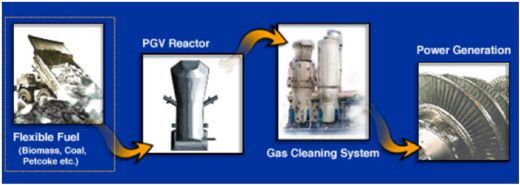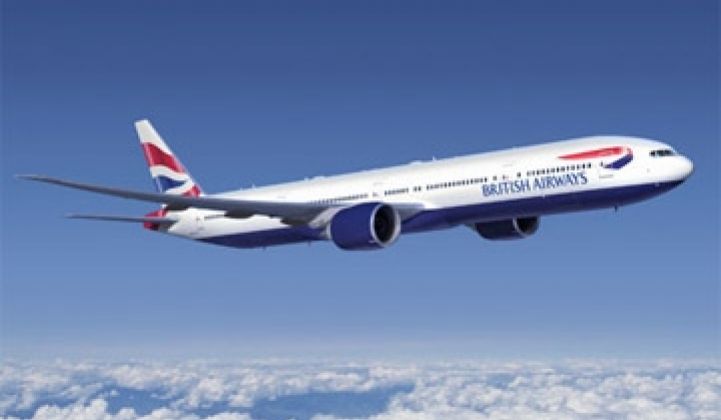This week, British Airways announced that it is partnering with U.S.-based Solena Group to build the first European commercial plant that will produce jet fuel from municipal solid waste streams like food scraps, grass, and tree cuttings, as well as agricultural and industrial waste.
The idea of using biomass to produce fuel is not new. In fact, on February 23, 2008, British Airway arch-nemesis Virgin Atlantic become the first commercial airline to oversee a flight partly powered by renewable energy (see Virgin to Test Fly Bio Jet Fuel). Virgin used a 747-400 jumbo jet to fly from London to Amsterdam and deployed one of its four engines with a 25% blend of biofuels that included coconut oil and babassu oil. In the last year, KLM, Air New Zealand, Qatar Airways, Continental Airlines, and Japan Airlines have also completed flights using biofuels like jatropha, camelina, and algae (see Navy Orders 20,000 Gallons of Algae Fuel From Solazyme).
What is striking about the BA announcement is the size. Solena will annually convert 500,000 tons of waste into 16 million gallons of jet biofuels. BA has refused to disclose the financial value of the deal, commenting that it is unable to predict what the market price for the biofuel will be in four years when the facility opens in 2014.
16 million gallons of jet biofuel is equivalent to 2% of all the kerosene used at London Heathrow -- the world's busiest airport -- and is equivalent to removing 48,000 cars off the road.
A number of 3rd Generation algae and synthetic-biology biofuel companies are pursuing drop-in fuels such as bio-jet fuel.
Solena Biomass to Electricity Process

There are some in the industry who believe that coal-to-liquid via Fischer-Tropsch technology is the only scalable technology for alternatives to petroleum-based aviation fuel. Currently, such processes are already produced commercially for the aviation industry in certain parts of the world. Germany pioneered the process during World War II, and for the past nine years, South African Airways has flown its jets on a 50-50 mixture of CTL synthetic and ordinary commercial fuel. The U.S. Air Force has completed a test program based on a blend very much like the South African fuel mix, using 50 percent Fischer-Tropsch synthetic fuel and 50 percent commercial fuel. While the Air Force and members of Congress from coal-producing states are major proponents of CTL aviation fuels, a lifecycle analysis conducted by the U.S. EPA found that CTL fuel actually releases 118.5% more greenhouse gases than conventional fuel.
Solena's technology involves feeding waste streams into a large plasma reactor whose arc torches heat the biomass to 5000 degrees Celsius. The biomass is then transformed into a syngas that is a combination of hydrogen and carbon monoxide. After the syngas is cooled and cleaned of its particulates, it is transformed into jet fuel via an undisclosed "advanced Fischer-Tropsch" technology. Although Solena has been mum on which catalysts it will use to convert the syn gas into jet fuel, the most common F-T catalysts are derived from iron, cobalt, nickel, and ruthenium.
Given that battery costs can add $15,000 to the price of an electric vehicle, there is no electrification option for the aviation industry for the foreseeable future. That is why the announcement of a commercial biomass-based jet fuel facility is significant.
Still, the industry has a long way to go.
World consumption of jet fuel is estimated by the IEA to have reached 165 million gallons per day (625 million liters) in 2006, the daily equivalent of draining the volume of an Olympic-sized swimming pool (2.5 million liters) every twenty minutes for an entire year. The International Energy Agency's most recent data for global jet fuel demand found that, in 2005, global consumption reached 78.6 billion gallons. In comparison to the Energy Information Agency's estimate that 682 billion gallons worth of transportation petroleum was consumed in 2006, jet fuel encompasses around 11.5% of global transportation fuel demand.
Since aviation petroleum accounts for 30%-50% of an airline's operating costs and comprises 13% of global transport emissions (including 2% of global carbon dioxide emissions), it is imperative that more of these projects get funded.



